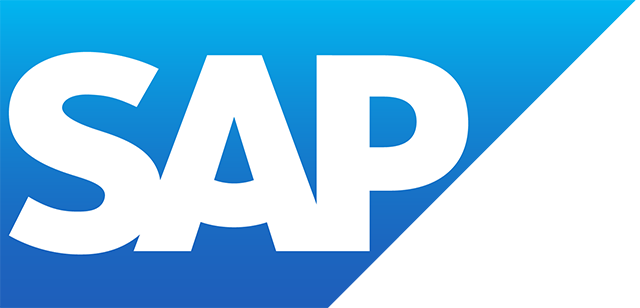SAP CoE Team Structure
Filter By
Browse By
- SAP Analytics and AI
- SAP Application Development and Integration
- All SAP Application Development and Integration
- SAP ABAP
- SAP ABAP Development Tools
- SAP ABAP Test Cockpit
- SAP API Management
- SAP BAPI
- SAP Basis
- SAP BRF
- SAP Business Application Studio
- SAP CMS
- SAP Design Studio
- SAP Development Tools
- SAP DevOps
- SAP EAI
- SAP EDI
- SAP Extension Suite
- SAP Fiori
- SAP Fiori Elements
- SAP Integration Suite
- SAP Low Code Application Development
- SAP Low Code Automation
- SAP Netweaver
- SAP Release Management
- SAP UI5
- SAP Web Application Server
- SAP Web IDE
- SAP Business Process Management
- SAP Center of Excellence
- SAP CIO
- SAP Customer Experience
- SAP Data and Data Management
- All SAP Data and Data Management
- SAP BW
- SAP BW/4HANA
- SAP Crystal Reports
- SAP Data Archiving
- SAP Data Center
- SAP Data Governance
- SAP Data Integration
- SAP Data Migration
- SAP Data Quality
- SAP Data Services
- SAP Data Strategy
- SAP Data Visualization
- SAP Data Warehouse Cloud
- SAP DMS
- SAP Document Control
- SAP EIM
- SAP ETL
- SAP ETL Tools
- SAP HANA
- SAP HANA Administration
- SAP HANA Deployment Infrastructure
- SAP HANA Studio
- SAP Master Data
- SAP Master Data Governance
- SAP MDM
- SAP Enterprise Architect
- SAP Enterprise Asset Management
- SAP ERP
- SAP Finance
- All SAP Finance
- SAP Accounting
- SAP AR AP
- SAP Asset Accounting
- SAP Billing Systems
- SAP BPC
- SAP BRIM
- SAP Cash Management
- SAP Central Finance
- SAP Controlling
- SAP COPA
- SAP Cost Center Accounting
- SAP Currency Risk
- SAP e-invoicing
- SAP FICO
- SAP Finance Automation
- SAP Advanced Financial Closing
- SAP Financial Consolidation
- SAP Financial Planning
- SAP FX Risk
- SAP General Ledger
- SAP Global Tax Management
- SAP Hyperion
- SAP Order to Cash
- SAP Payment Processing
- SAP Profitability Analysis
- SAP Rebate Management
- SAP S/4HANA Finance
- SAP SWIFT Compliance
- SAP Treasury Management
- SAP Universal Journal
- SAP Governance Risk and Compliance
- SAP Human Capital Management
- SAP Intelligent Technologies
- SAP Platform and Technology
- All SAP Platform and Technology
- SAP Business Technology Platform
- SAP Cloud
- SAP Cloud Connector
- SAP Cloud Integration Platform
- SAP Cloud Migration
- SAP Cloud Platform
- SAP Cloud Providers
- SAP Cloud Strategy
- SAP Digital Signature
- SAP Container Platform
- SAP HANA Enterprise Cloud
- SAP Digital Asset Management
- SAP Smart Forms
- SAP HEC
- SAP Digital Integration Hub
- SAP Hyperscalers
- SAP Infrastructure
- SAP Messaging
- SAP Quality and Testing
- SAP Security
- SAP Spend Management
- SAP Supply Chain Management
- All SAP Supply Chain Management
- SAP APO
- SAP Asset Management
- SAP Business Network
- SAP Digital Manufacturing Cloud
- SAP Digital Twin
- SAP EWM
- SAP IBP
- SAP Inventory Management
- SAP Label Printing
- SAP Logistics
- SAP Manufacturing
- SAP Manufacturing Automation
- SAP MES
- SAP MII
- SAP MM
- SAP MRO
- SAP MRP
- SAP Order Management
- SAP Plant Maintenance
- SAP PLM
- SAP Production Planning
- SAP S&OP
- SAP SD
- SAP SPM
- SAP Supply Chain Planning
- SAP Track and Trace
- SAP Transportation Management
- SAP System Administration
SAP CoE Team Structure
Funding a large center of excellence may not be feasible due to budget, typically a small team is formed to start. This team builds a strong relationship with the business to collaborate and reach out when more information is needed.
SAP CoE Team Structure
Funding a large center of excellence may not be feasible due to budget, typically a small team is formed to start. This team builds a strong relationship with the business to collaborate and reach out when more information is needed.
Generally, there are four categories of a CoE team:
- This is the figurehead of the team that takes control of the lifecycle of the SAP system. One important aspect of this role is demand management.
- Core team. This team manages the day-to-day operations and small-scale enhancements. They contribute to the definition of the center of excellence methodology.
- Extended team. This group works alongside the core team within their subject matter expertise. When this team does not exist in an organization the roles work as part of the core team.
- Project team(s). This is a temporary team to deliver SAP projects to the organization. It includes a project manager, SAP architect(s), SAP analyst(s) and business process experts.
CoE Simply Defined
The CoE (Center of Excellence) is a centralized team of skilled knowledge workers whose mission is to provide the organization with best practices around a certain area of interest. Regardless of the organizational structure or budget, it is important to have the right people with defined roles and responsibilities for the team. The goal is to sustain world-class performance and value.
Seven Steps for to Success for SAPinsiders are:
- Realign the business and IT after an SAP implementation
- Set up a governance
- Define functions and organize the CoE
- Implement post go live processes for continuous improvement
- Mobilize for post go live organizational change
- Marketing the CoE
- Set up your CoE
968 results
-

 Premium
Premium
Enhance R/3’s Product Allocation Tool by Integrating It with APO’s DP and GATP Modules
Reading time: 26 mins
SAP R/3 and Advanced Planner and Optimizer (APO) provide several different ways to manage planning hierarchies for product allocation purposes, each with benefits and drawbacks. The author shows how to optimize product allocation in R/3 and presents examples of how R/3 integrates with APO’s Demand Planning (DP) and Global Available to Promise (GATP). Both SAP...…
-

 Premium
Premium
6 Keys for Managing An Offshore Development Team
Reading time: 9 mins
Offshoring SAP development work has become a common practice for many companies looking to reduce overall project costs. However, cost reduction is only one reason to consider hiring offshore developers, according to Deloitte Consulting Senior Manager Karl Rupilius. If managed properly, incorporating an offshore development team can also help improve the quality of your project...…
-

 Premium
Premium
SAP Simple Finance: New Options in Profitability Analysis
Reading time: 13 mins
Discover what changes in profitability analysis (CO-PA) when you use SAP HANA as a database. Learn how to link the general ledger and CO-PA and see what functional enhancements have been made to account-based CO-PA to provide greater transparency. Ensure that you get the best of both worlds: figures in the income statement that match...…
-
-

- SAP System Administration
 Premium
Premium
Improve Forecast Quality with Sales Forecast Collaboration Using SNC and APO
Reading time: 11 mins
Find out how you can establish a direct integration between Advanced Planning and Optimization Demand Planning and the Supply Network Collaboration sales forecast collaboration process. The integration leads to a combined forecast, an integration of data, and an improved total cost of ownership. Key Concept Supply Network Collaboration (SNC) allows business partners to align, share,...…
-

Transition to SAP S/4HANA Finance
Reading time: 11 mins
There are myriad options associated with a transition to SAP S/4HANA Finance, and navigating all the choices can be challenging. It’s important to make sure that you chart your optimal road map to SAP S/4HANA Finance based on the specific needs of your organization. Read the Q&A transcript with Quality Systems & Software’s Mitresh Kundalia...…
-

Driving Digital Value at Scale
Reading time: 4 mins
SoftwareOne has transformed from a licensing and procurement partner to a key player in digital transformation, offering comprehensive services for cloud modernization and enterprise optimization globally while emphasizing a local approach to meet the diverse needs of organizations across different regions.
-

- SAP APO
 Premium
Premium
Correlate the Use of Causal Analysis in SAP APO with the Underlying Mathematical Model
Reading time: 44 mins
Learn how to carry out causal analysis in SAP Advanced Planning and Optimization (SAP APO) when demand is correlated with some known and measureable factor (demand is a function of some variables). Understand how regression is used to find correlations between a single dependent variable (y) and one or more independent variables (x1, x2…xn) and...…
-
-

SAP and Its Partner Ecosystem Collaborate for Success
Reading time: 6 mins
Many companies today are finding themselves in need of guidance when it comes to tackling their biggest business challenges. With the help of its partner ecosystem, SAP is working to support customers in overcoming these issues. For example, take SAP’s global alliance with United VARs. United VARs received a 2017 SAP Pinnacle Award for Special…
-

Leveraging SAP’s Transformation Suite approach with LeanIX, SAP Signavio, and SAP Cloud ALM
Join us for a valuable pre-conference session covering the interplay of LeanIX, Signavio, and SAP Cloud ALM. This engaging session will empower enterprise architects and Centers of Excellence (COEs) with innovative and efficient strategies to lead transformation initiatives. Attendees will gain the insights to navigate modern transformation complexities confidently and flexibly. You will: Demystify the...…
-

 Premium
Premium
How to Archive Info Structures in SAP for Retail
Reading time: 17 mins
In a major retail site or store, data from point of sale (POS), the front-end system in the retail industry, is stored in multiple SAP tables and shares relevant data as a single POS database, known as an information structure (info structure). Because the database grows rapidly, it slows the SAP retail system and requires...…
Become a Member
Unlimited access to thousands of resources for SAP-specific expertise that can only be found here.
Become a Partner
Access exclusive SAP insights, expert marketing strategies, and high-value services including research reports, webinars, and buyers' guides, all designed to boost your campaign ROI by up to 50% within the SAP ecosystem.
Upcoming Events
Related Vendors
Your request has been successfully sent


